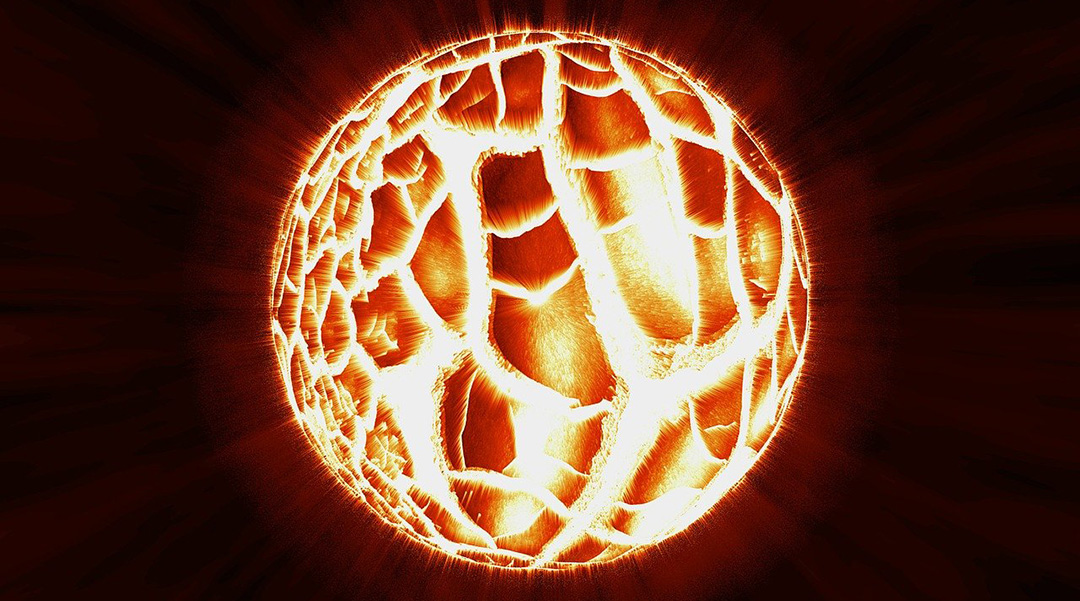Scientists may have just confirmed a longstanding hypothesis that neutron stars stars contain a quark matter hidden in their cores
Neutron stars are the densest celestial bodies known to astronomers, with a mass exceeding that of the Sun packed into a ball with a diameter of about 20 kilometers. They are generally thought to be made of pure neutrons, meaning their interiors should be similar to gigantic atomic nuclei, about 13 orders of magnitude denser than Earth.
However, according to some theories, the most massive of neutron stars have such enormous pressure in their cores that the neutrons residing there are crushed and lose their integrity, resulting in a new type of matter called “quark matter”.
“[Neutrons’] constituent quarks and gluons are instead liberated from their typical […] confinement and are allowed to move almost freely,” explained Aleksi Vuorinen, professor of theoretical particle physics at the University of Helsinki, in a press release.
Quarks are elementary particles that make up protons, neutrons, and other composite particles called hadrons. They participate in all four known fundamental interactions — gravitational, electromagnetic, weak, and strong — but it is the strong interaction that binds quarks to each other inside hadrons.
Quantum chromodynamics, the modern theory of strong interactions, predicts that the properties of quark matter are significantly different from neutron matter, and astronomers suspect that these differences should be reflected in the structure of neutron stars, such as their density, internal pressure, size and others.
To find this out, an international team of researchers analyzed a huge set of neutron star observations, comparing them with theoretical predictions of their structures, made both on the assumption that their cores are composed of either quark or neutron matter.
“It is fascinating to concretely see how each new neutron star observation enables us to deduce the properties of neutron-star matter with increasing precision,” said Joonas Nättilä, one of the lead authors of the study published in Nature Communications.
The scientists analyzed the relationship between the radius and mass of different neutron stars, the properties of gravitational waves emitted when pairs merge, and a measurement of the maximum mass of a neutron star. All these properties hinge on what their cores are made of.
“We had to use millions of CPU hours of supercomputer time to be able to compare our theoretical predictions to observations and to constrain the likelihood of quark-matter cores,” said Joonas Hirvonen, a Ph.D. student working with Nättilä and Vuorinen.
The team concluded that the lightest neutron stars, which have a mass slightly larger than the Sun, have no quark matter in their composition, while the largest of them, which are about 2.5 times heavier than the Sun, likely have a quark core.
To nail this down with absolute certainty, the scientists say they need more intel on their structure, especially understanding the link between size and mass.
Given the ever-increasing accuracy of our ability to measure the properties of X-ray radiation from neutron stars, as well as the gravitational waves they emit when they merge with each other or black holes, it seems likely that this data could become available in the near future.
These insights would allow scientists to use neutron stars to study many unknown aspects of particle physics; the physics the production of quark matter in the lab has been exceedingly challenging. Within particle accelerators, it exists for a vanishingly short time, whereas inside neutron stars it hypotheticallyhypothetical lasts for billions of years — ample enough time.
Reference: Emeli Annala, et al., Strongly interacting matter exhibits deconfined behavior in massive neutron stars, Nature Communications (2023). DOI: 10.1038/s41467-023-44051-y
Feature image credit: LoganArt on Pixabay

















